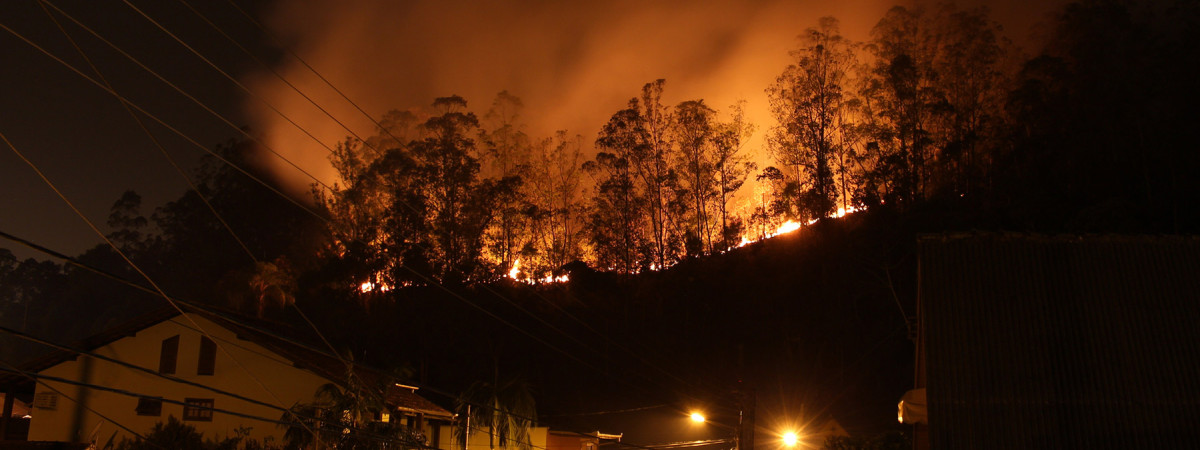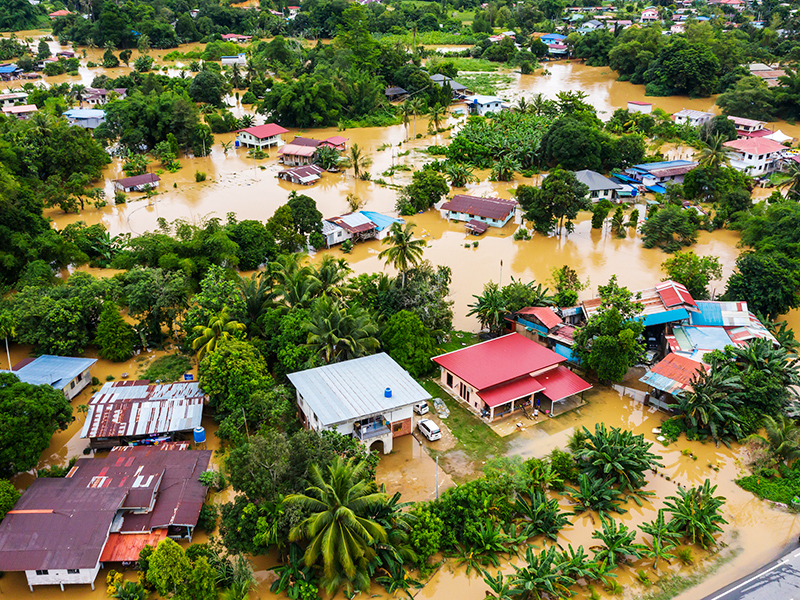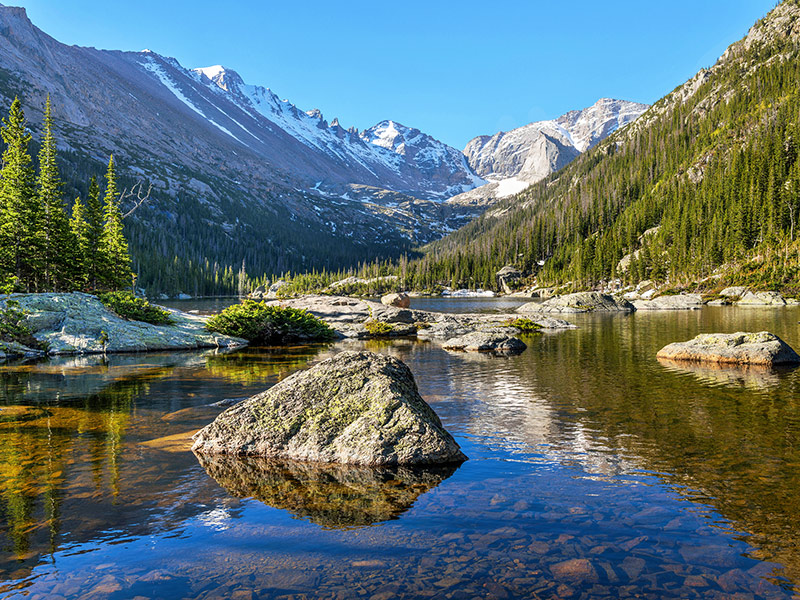
Authors
-
Anna Iles
Former Associate Director, Transformation, BSR
-
Deb Gallagher
Former Director, Climate Change, BSR
-
Lara Abiona
Former Associate, Transformation, BSR
Wildfire smoke is a growing public concern. As climate change alters the severity of wildfires across the world, experts are making unsettling discoveries about the ramifications of prolonged exposure to smoke. A new understanding of the environmental and health impacts has significant implications for the role of business in wildfire prevention, management, and adaptation.
Recent wildfires causing damage of historic proportions, from Australia to California, are driving new research on the impacts of smoke—with disturbing revelations. One is its role in greenhouse mitigation reversal. As forests burn, they release CO2, intensifying global warming and increasing wildfire risk. A recent study found that carbon released from California’s 2020 wildfires amounted to 127 million megatons and dwarfed the state’s emission cuts over a 16-year period. Protecting forests from wildfire risks is therefore crucial to maintaining the impact of mitigation efforts to date.
Equally alarming are the disproportionate health impacts of fires for communities hundreds of kilometers downwind: in the US, three-quarters of deaths and hospital admissions attributable to wildfire smoke occur in the East, where population density is highest, not in the West where the majority of large fires occur. Not only are these impacts more far-reaching than previously thought, they are also more severe and long term: fine particles that travel cross-continent on the wind reach deep into our bodies, with significant neurological, respiratory, and dermatological impacts. These converging environmental and health impacts call for greater scrutiny of wildfire risks across value chains, examining how specific activities contribute to wildfire risk, as well as where both proximate and distant exposure to wildfires and related smoke poses a risk to communities and workers.
A Major Challenge to Emissions Reduction and Public Health
The impacts of wildfires on global warming go beyond the reversal of carbon mitigation efforts. Researchers in Singapore found that carbon monoxide from wildfire smoke could be both accelerating natural processes that produce methane and slowing those that remove it from the atmosphere, with much greater impact on global warming than previously thought. This presents a complex and escalating climate feedback loop: both smoke and warming drive methane levels; both carbon emissions from smoke and methane drive warming; warming drives wildfire incidence and intensity, increasing levels of smoke and methane.
The risks to brain health, evident in populations over 300 kilometers away, have huge implications for the workforce and communities, both immediate and long term. A number of studies link the fine particles of smoke to degenerative conditions such as Alzheimer’s disease as well as depression and psychosis. High exposure has also been linked to skin conditions like eczema and psoriasis and worsened birth outcomes. Particulate pollution from higher levels of methane is also more likely to aggravate respiratory and cardiovascular disease. Disproportionately impacted populations include outdoor workers—such as construction and farm workers, both with a high level of migrants—and socially disadvantaged groups with limited adaptive capacity, particularly in densely populated areas.
The Business Implications
Recognition of the climate and health impacts of smoke, alongside the push for businesses to fight air pollution, could heighten business liability and lead to stricter climate risk requirements across all company value chains:
“Acting to prevent wildfire smoke across the value chain is a climate win, a public health win, and a reduction in business risk” says David Wei, BSR's Climate Director.
Outdoor labor will be increasingly hazardous, and potentially subject to restrictions. Air quality reporting may be required for both outdoor and indoor environments, raising demand for energy-efficient filtration systems. Adaptation may also mean relocation—both in fire-prone areas and downwind. Poor communities, unable to relocate or filtrate, will increasingly face a clean air health divide, among a plethora of climate justice concerns.
Land-based sectors are on the frontline. Prolonged exposure to wildfire smoke can both disrupt farm labor and also destroy the outer layers of crops and affect soil composition. This can lead to chronically underperforming crops, potentially driving financial and job losses.
Fresh impetus for nature reporting and ecosystem regeneration can be harnessed to support mitigation. Agricultural experts in California have called for targeted grazing to manage vegetation as a cost-effective wildfire fuel reduction method. Controlled burning has long been used to protect ecosystems and communities from wildfires and support regeneration, but while preventative action can reduce insurance premiums, insurance for this practice is increasingly expensive or unavailable. Diverse forests, less susceptible to wildfires than monocultures, will be critical, a clear call for action to the pulp and paper industry, as well as for afforestation projects. Businesses dependent on forest inputs can advocate for regenerative approaches, as well as scouring their value chains for mitigation opportunities ahead of stricter requirements.
All sectors could be affected by the implications for decarbonization. Demand in the carbon offset market is high and expected to increase over the next few decades; however, the potential of wildfire smoke and other climate impacts to disrupt forestry-related projects and negate carbon reductions could drive a more critical look at offset quality and effectiveness. Despite the urgent need for investment in nature-based solutions, companies may favor technological carbon removals and inadvertently limit nature’s role in addressing both the climate and biodiversity crises. We may also see increased interest in methane removal.
In line with the IPCC’s latest report, as we emphasize here, it’s time for companies to look beyond emissions reduction to adapt to climate impacts. Where wildfires are concerned, the climate feedback loop means adaptation will also reap benefits for mitigation.
Integration and Innovation
For most businesses, adapting to wildfires and smoke means doubling down on worker and community health and safety, investing in innovative approaches alongside personal protective equipment (PPE), air quality, and remote work options. Companies such as PG&E and Torch Sensors are using AI technology for ultra-early-stage fire detection. Emerging aerial and space-based technologies are expanding possibilities for detecting early warning signs of wildfires. Breezometer’s Active Fires and Smoke Pollution Map provides businesses with fire-related pollution tracking and up-to-date fire alerts across 100+ countries.
However, while co-creating local solutions to the hazards of wildfire smoke is essential, businesses also need to respond to its dispersed impacts. Truly effective adaptation and mitigation will demand an integrated, multi-stakeholder response across sectors and even across continents. The recently published Roadmap for Wildfire Resilience supports an “all-of-society" approach, advocating collaboration across all levels of government, Tribal Nations, the private sector, and other stakeholders. UNEP is calling for countries to adopt a “Fire Ready Formula," in which 66 percent of spending is devoted to planning, prevention, and recovery from wildfires, and the remaining 34 percent is spent on response. Businesses should bolster such cross-sector initiatives and collaborate to drive more responsible forestry practices in their supply chains.
The climate, health, and environmental justice hazards make this a material concern for any companies, however remotely they are subject to fire and smoke risk.
Questions for Business
- What action can you take to address wildfire impacts across your value chain?
- How might you prepare for enhanced supply chain climate risk requirements?
- How does smoke affect health and safety for your business?
- How resilient is your carbon reduction strategy to the impacts of wildfire smoke?
BSR’s latest sustainability insights and events straight to your inbox.
Topics
Let’s talk about how BSR can help you to transform your business and achieve your sustainability goals.







